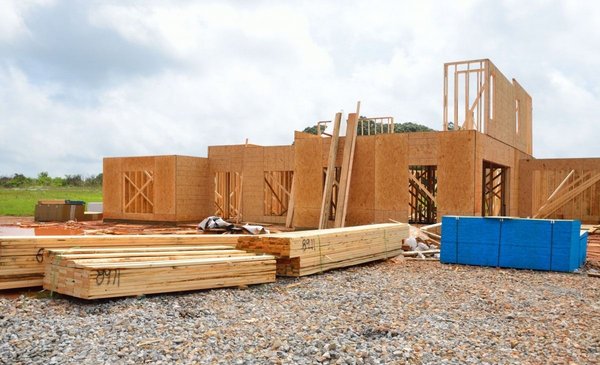The Ministry of Housing and Territorial Planning (MVOT) launched its national plan for the construction of social housing in wood with 10 lines of action that seek to promote the forestry industry and the development of wood construction within a period of four years.
The activity, which took place in the Special Events Hall of the Legislative Palace, was attended by the Minister of Housing and Territorial Planning, Irene Moreira, and Undersecretary Tabaré Hackenbruch. Also present were Matías Bendersky, representative of the Inter-American Development Bank (IDB) in Uruguay, which supports the initiative, and Juan José Ugarte, IDB consultant.
Moreira said at a press conference that this roadmap is the result of the work of more than 78 groups that were studying “what were the limitations and barriers that existed for wood construction”. In that sense, he indicated that “there is a fairly great lack of knowledge in certain issues” related to wood, such as “house maintenance or fire”, which generate “fear” but that “it is not like that”.
The chief highlighted the support for the project from Chile, Finland, Italy and Japan and affirmed that wood construction is a “State policy” that will transcend his administration since “this is how they are doing it in different parts of the world.” Among those invited to the event was the Japanese ambassador to Uruguay, Asari Hideki.
Moreira explained that there is “a lot of interest” from the private sector in the project. Although he did not specify figures, he emphasized that wood construction has “a lower cost” than traditional construction and remarked that, in addition, they are made “in a very short time.”
“In the pilot plan that was carried out in Rivera, in four months the participants were already entering their homes. I think this is essential at a time when there is so much homelessness. Being able to save on construction time and without losing quality seems to me to be very important and worth more than money”, he highlighted.
The ten axes of the roadmap The Roadmap (HDR) for the Construction of Social Housing in Wood in Uruguay will have a transversal axis that is the generation of a governance structure with multiple actors, which will be incorporated into other initiatives that are already under development. Within a period of six months, the creation of technical groups, the presentation of work plans and the definition of indicators are expected. In two years, the first publication of results will be made and in four years the HDR evaluation will be published.
“The issue is state policy, it is not only because of this administration,” said Irene Moreira.
In addition to this transversal axis, 10 lines of action will be worked on. The first aims to generate or update national or departmental regulations for wood construction (national fire decree, horizontal property law, wood durability, among others). The second line of
action refers to the development and execution of various wood projects such as high-rise and extension homes and public buildings to consistently activate the demand for wood.
Diego Battiste
The program was launched in Parliament.
Third, it will aim to complete the characterization of national wood with the aim of supporting the regulatory update and certifying its production standards. The fourth point seeks to generate and implement collaborative multilevel capacity building programs, both in the public and private spheres. The fifth action is on the side of developing constructive solutions suitable for national wood and the required performance standards (structure, fire, acoustic, thermal). In sixth place is the development of an investment and support program to improve the competitiveness and productivity of logging SMEs, including training and association activities.
The seventh line of action emphasizes conceiving and implementing an effective communication strategy towards different audiences such as users, developers, professionals and the general public. The eighth point seeks to generate incentives (exemptions, contributions, financial or insurance costs) for private developers to opt for wood construction. In ninth place is the idea of promoting national trade in forestry production, aiming at a constant and quality offer for sawmilling and component production lumber SMEs. The last point involves the generation of design guides, specifications, construction, reception of works and use of wooden buildings for the target audiences.
Pilot with positive numbers
In a pilot plan developed at the initiative of Mevir in Rivera, 10 houses were built under the framing model, with almost 100% wood,
which gave a positive result. As Deputy Minister Hackenbruch had informed The Observerwith the completion of this pilot plan it was found that “the construction footage was 50% faster, 40% cheaper (about US$700 per square meter) and the quality of decent housing did not decrease” compared to building a house with traditional materials.







